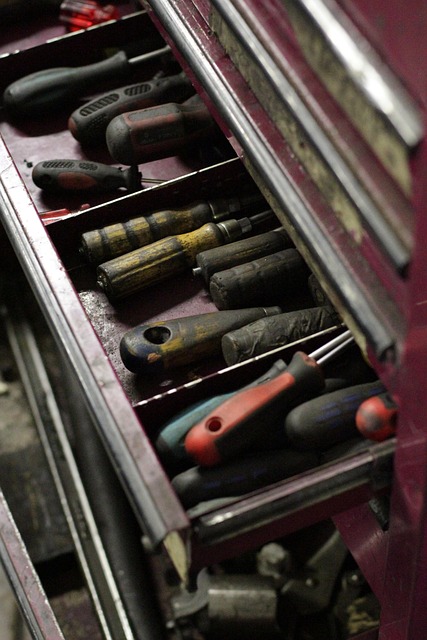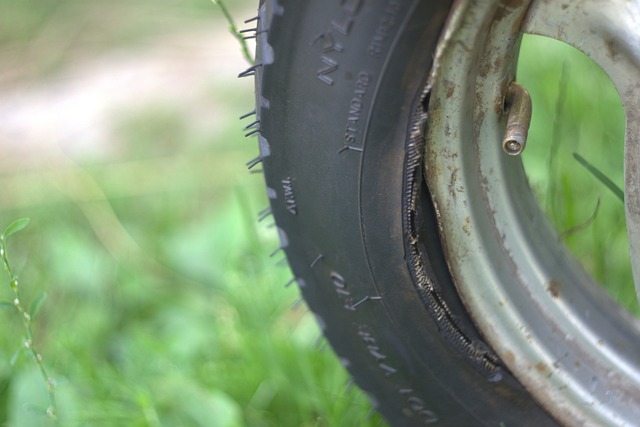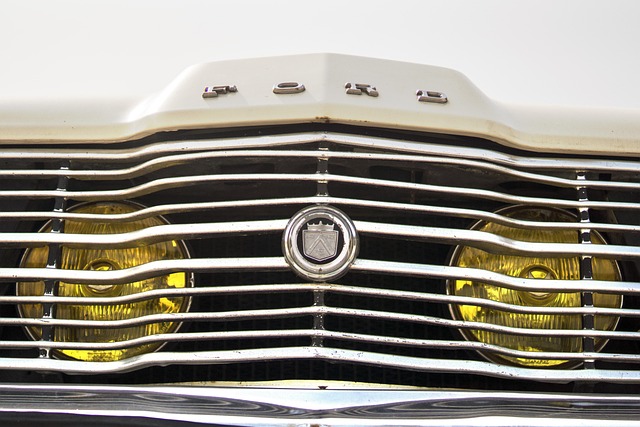Safe Seat Repair After Collision Damage: Precautions and Quality Assurance
Seat repair after a collision is vital for both safety and vehicle restoration. It involves comprehe…….
In the realm of automotive restoration, “seat repair collision damage” stands as a critical aspect that demands meticulous attention. This comprehensive article aims to delve into the intricate world of repairing vehicle seats affected by collision events, exploring its various facets and impact on both industries and individuals. By the end, readers will grasp the significance of this specialized field, its global reach, and the innovative solutions shaping its future.
Definition: Seat repair collision damage refers to the process of restoring vehicle seats that have sustained harm due to accidents or collisions. It involves identifying and rectifying structural deformations, fabric tears, and various other damages that may compromise the safety and comfort of the seat.
Core Components:
Structural Repair: Restoring the seat’s framework, including metal components, springs, and mechanisms, to their original integrity.
Fabric Restoration: Involves repairing or replacing torn or damaged upholstery fabric while ensuring color and material consistency with the vehicle’s interior.
Padding Reconstruction: Replenishing and reshaping the soft padding to match the seat’s original contour and provide adequate comfort.
Safety Mechanisms: Checking and rectifying any malfunctioning safety features, such as airbags or locking mechanisms, is a crucial aspect of collision damage repair.
Historical Context: The concept of seat repair has evolved alongside advancements in automotive technology. As vehicles became more complex and sophisticated, so did the techniques employed for restoration. Modern methods leverage advanced tools and materials, ensuring seats not only look but also function as good as new.
“Seat repair collision damage” is a global concern, with varying degrees of implementation and awareness across regions:
North America: Known for its robust automotive industry, the US and Canada have well-established guidelines and trained professionals for seat repairs. Advanced technologies, such as 3D printing for custom parts, are revolutionizing restoration processes.
Europe: With a dense network of auto manufacturers, Europe has a highly regulated approach to collision repair, including seat restoration. The region embraces eco-friendly materials and methods, promoting sustainability in the restoration process.
Asia Pacific: Rapidly growing automotive markets like China and India are witnessing increased demand for seat repair services. Cost-effective solutions and skilled labor drive this region’s unique trends in collision damage restoration.
Rest of the World: Emerging economies are gradually adopting modern repair practices, with local professionals offering innovative solutions tailored to their specific needs.
The global seat repair collision damage market is a significant contributor to the automotive aftermarket, generating substantial revenue annually. Key economic aspects include:
| Factor | Impact |
|---|---|
| Market Size: Estimated at over $XX billion in 2023, with projected growth of Y% by 2030. | Growing demand from an aging fleet of vehicles and increasing road accidents drive market expansion. |
| Labor Costs: Varies across regions, with skilled technicians charging higher rates. | Training programs and specialized schools play a vital role in addressing labor shortages and ensuring quality repairs. |
| Material Availability: Eco-friendly and recycled materials are gaining traction due to environmental concerns. | The rise of sustainable practices may impact material costs and supply chain dynamics. |
| Insurance Coverage: Many insurance policies include collision damage coverage, influencing consumer behavior and market demand. | Insurance claims contribute significantly to the market’s revenue stream. |
Technological innovations have revolutionized seat repair collision damage, offering faster, more efficient, and cost-effective solutions:
3D Printing: Customized parts can be printed on demand, reducing lead times and costs. This technology enables the creation of intricate designs, ensuring precise repairs.
Virtual Reality (VR) and Augmented Reality (AR): These immersive technologies assist technicians in visualizing and measuring damaged components accurately. VR training simulations enhance learning curves.
Advanced Materials: Eco-friendly foams, fabrics, and adhesives are being developed to meet sustainability goals while maintaining performance.
Robotica: Automated systems are introduced for certain tasks, such as welding and paint application, improving consistency and productivity.
Regulatory frameworks play a crucial role in standardizing seat repair practices and ensuring consumer safety:
Safety Standards: Organizations like SAE International set guidelines for vehicle safety, including seat construction and repair requirements.
Environmental Regulations: Many countries mandate the use of recycled materials and eco-friendly disposal methods for automotive waste.
Consumer Protection: Laws protect consumers from subpar repairs, ensuring they receive quality service within a reasonable timeframe.
Training Requirements: Professional organizations and governments collaborate to establish training programs, certifying technicians with specialized skills in seat repair.
Despite its significance, the field of seat repair collision damage faces several challenges:
Skilled Labor Shortage: The demand for trained technicians often exceeds supply, leading to longer wait times and higher costs. Addressing this gap requires comprehensive training programs.
Cost Concerns: Repair costs can be a deterrent for some consumers, especially with the increasing complexity of vehicle designs. Transparent pricing and affordable solutions are essential.
Eco-Friendly Practices: While sustainability is a priority, some traditional materials and disposal methods remain prevalent. Encouraging eco-conscious practices requires industry collaboration.
Proposed Solutions:
Public Awareness Campaigns: Educate consumers about the importance of proper seat repairs for safety and vehicle longevity.
Industry Collaboration: Auto manufacturers, repair shops, and regulators should work together to develop standardized training programs and share best practices.
Incentives for Eco-Friendly Practices: Governments can offer tax benefits or subsidies for businesses adopting sustainable materials and disposal methods.
A specialty repair shop in the US successfully restored classic muscle cars, employing advanced technologies while preserving their original aesthetic. By using 3D printing for hard-to-find parts and VR to map interior details, they achieved remarkable results. This case highlights the fusion of tradition and innovation in seat repair.
In a low-income neighborhood, a local initiative used seat repair as a skill-building program for youth. They partnered with auto shops, providing training and employment opportunities. This approach not only restored seats but also empowered young individuals, fostering a sense of community ownership.
An international automotive alliance shared research on collision damage repair, particularly focusing on safety mechanisms. By pooling resources, they developed standardized protocols, ensuring consistent seat repair practices across borders and enhancing global road safety.
The future of “seat repair collision damage” is poised for significant growth and innovation:
Digital Twin Technology: Creating digital replicas of vehicles enables virtual repairs, allowing technicians to practice and simulate complex scenarios before actual work begins.
Artificial Intelligence (AI): AI algorithms can analyze damage patterns, recommend repairs, and even predict potential issues, enhancing efficiency and accuracy.
Sustainable Focus: The industry will continue to embrace eco-friendly materials, minimizing environmental impact while meeting repair requirements.
Remote Expertise: With advancements in communication technologies, remote consultation services may become commonplace, providing access to expert knowledge globally.
“Seat repair collision damage” is more than just a specialized service; it is a critical component of automotive care that ensures safety, comfort, and vehicle longevity. As the industry evolves, technological advancements, global collaborations, and sustainable practices will shape its trajectory. By addressing challenges and harnessing new opportunities, professionals in this field contribute to building a safer and more resilient transportation network.
Q: How do I know if my vehicle’s seat needs repair after a collision?
A: Signs include visible damage, ripples or bulges in the fabric, uneven wear patterns, or malfunctioning safety features. Professional inspection is recommended for accurate assessments.
Q: Are there eco-friendly options for seat repairs?
A: Yes, many materials and adhesives are now available that meet environmental standards while maintaining performance. Recycled content and sustainable disposal methods are also being adopted.
Q: Can I learn seat repair collision damage restoration on my own?
A: While DIY enthusiasts may find basic repairs manageable, complex tasks require specialized training. Professional courses offer comprehensive learning for those seeking a career in this field.
Q: How long does it take to restore a seat after a collision?
A: Repair times vary depending on the extent of damage. Simple fabric repairs can be done quickly, while structural and mechanical work may take several days or weeks.
Q: Is it cost-effective to repair a seat instead of replacing it?
A: Absolutely! Repairs are significantly more affordable than replacements, often saving hundreds or even thousands of dollars. Plus, it extends the life of your vehicle’s interior.

Seat repair after a collision is vital for both safety and vehicle restoration. It involves comprehe…….

Seat repair in collision damage cases is a critical, multi-step process focusing on structural integ…….

Collision damage to vehicle seats is a common issue after accidents, affecting both appearance and c…….

Seat repair collision damage guarantees offer customers peace of mind with promises of high-quality…….

Collision damage, from minor dents to severe structural issues, can have hidden effects, particularl…….

Are you a car owner who’s experienced a collision? Understanding seat repair collision damage guaran…….

Environmental conditions, such as temperature extremes, humidity, and UV radiation, significantly im…….

Seat repair after a collision is a vital part of restoring vehicle safety and functionality, address…….